Whatever your interest in Palestine is — be it religious, historical, or cultural-political — there is no better way to get a clear picture of the territories than to visit them. Contrary to the images that the mere mention of Palestine conjures, traveling in the region is easy, safe, and the people are incredibly welcoming. Palestine is composed of two territories: the West Bank (located between Israel and Jordan) and the Gaza Strip (land bordering Israel and Egypt). Travelers can go to the West Bank, but the Gaza Strip is closed to tourism. Here is everything you need to know about visiting the West Bank and the Israeli side of the Gaza Strip border.
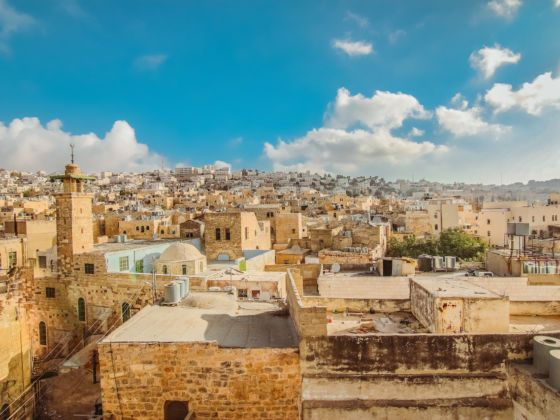

Traveling to Palestine Is Easier and Much Safer Than You Think
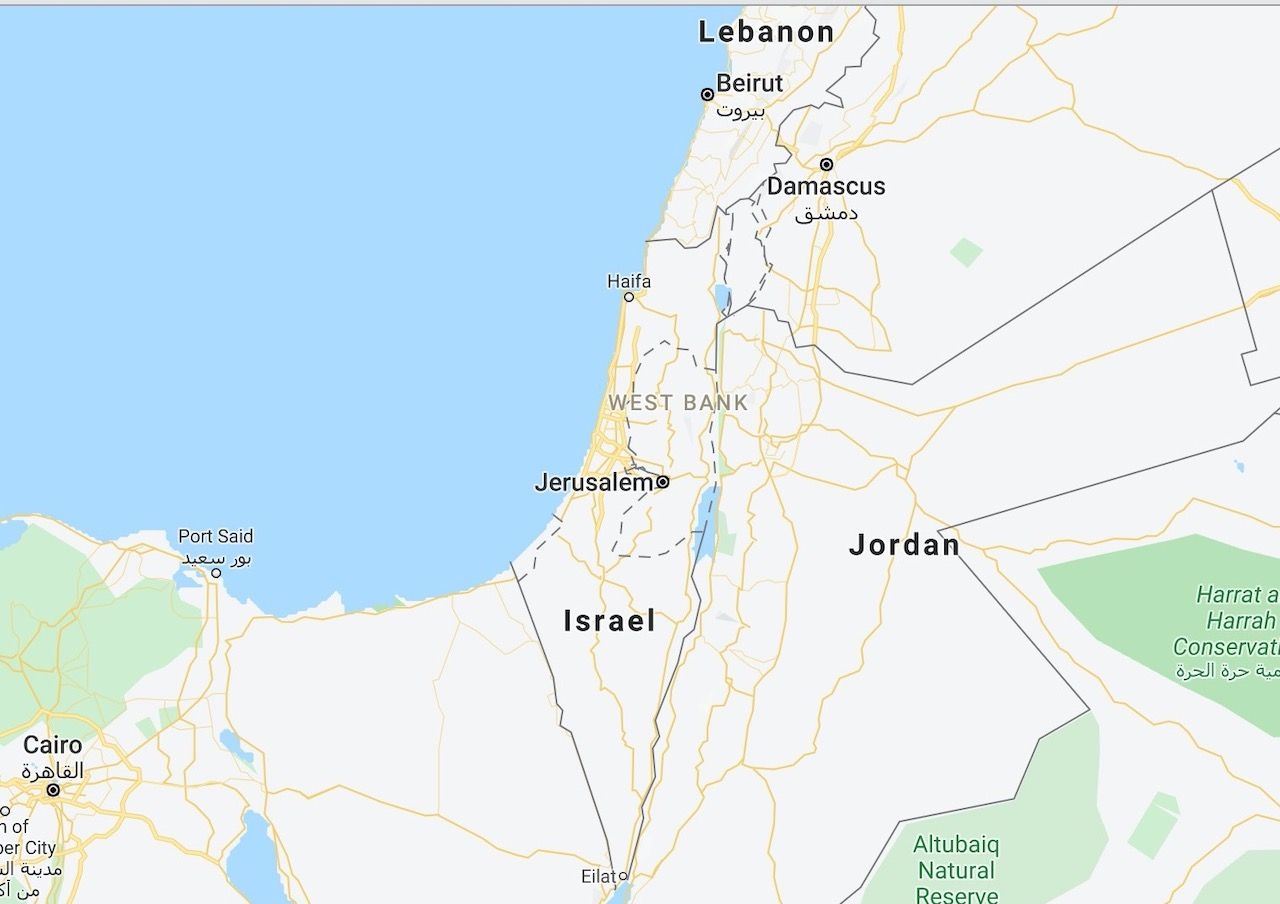
The Palestinian Territories are the areas delimited by the dotted lines. Photo: Google Maps
- Practical information about the West Bank for travelers
- How to get to the West Bank from Israel
- What to do in the West Bank and where to start your visit
- Visiting the Gaza Strip border
The West Bank
Practical information about the West Bank
The currency used in the West Bank is the same as the one used in Israel: shekel (0.00 per 1 USD). The official language is Arabic although many people in the cities speak basic English. It’s recommended to dress modestly: Both men and women should cover their shoulders and legs, and even their heads and arms to enter some places such as temples and other sacred edifices. Most shops are closed on Fridays because it’s the resting day for Muslims (commercial activity also slows down during the month of Ramadan). But since there is a minority of Christians, some places are also closed on Sundays. Whatever you do, start early, because most places close around 4:00 PM. Note that summer is the hottest time of the year in Palestine, so avoid this season if you can’t handle the heat.
Safety: The West Bank is divided in three areas (A, B, and C), which are administered by Israel and the Palestinian Authority. It has lived in relative peace since the Second Intifada ended (2005), so the answer is yes, it’s safe to travel to the West Bank in general, so long as you follow local guidelines.
Where to stay: Bethlehem has the most accommodation options, which makes it perfect to use as your base. But all places have some kind of lodging. The choice is yours: Airbnb apartments or rooms, hostels, hotels, bed and breakfasts, and even homestays where you can work as a volunteer and participate in the annual olive harvest.
Transportation: We recommend the yellow mini-van shared taxis (pronounced serveece), which cost about 10 percent of the price of a taxi. Hiring taxi drivers by the hour is an excellent option considering the cost-time benefit, especially if you are sharing the ride with a couple of travelers. Most rental cars companies don’t allow you to take the cars you rent in Israel to the West Bank.
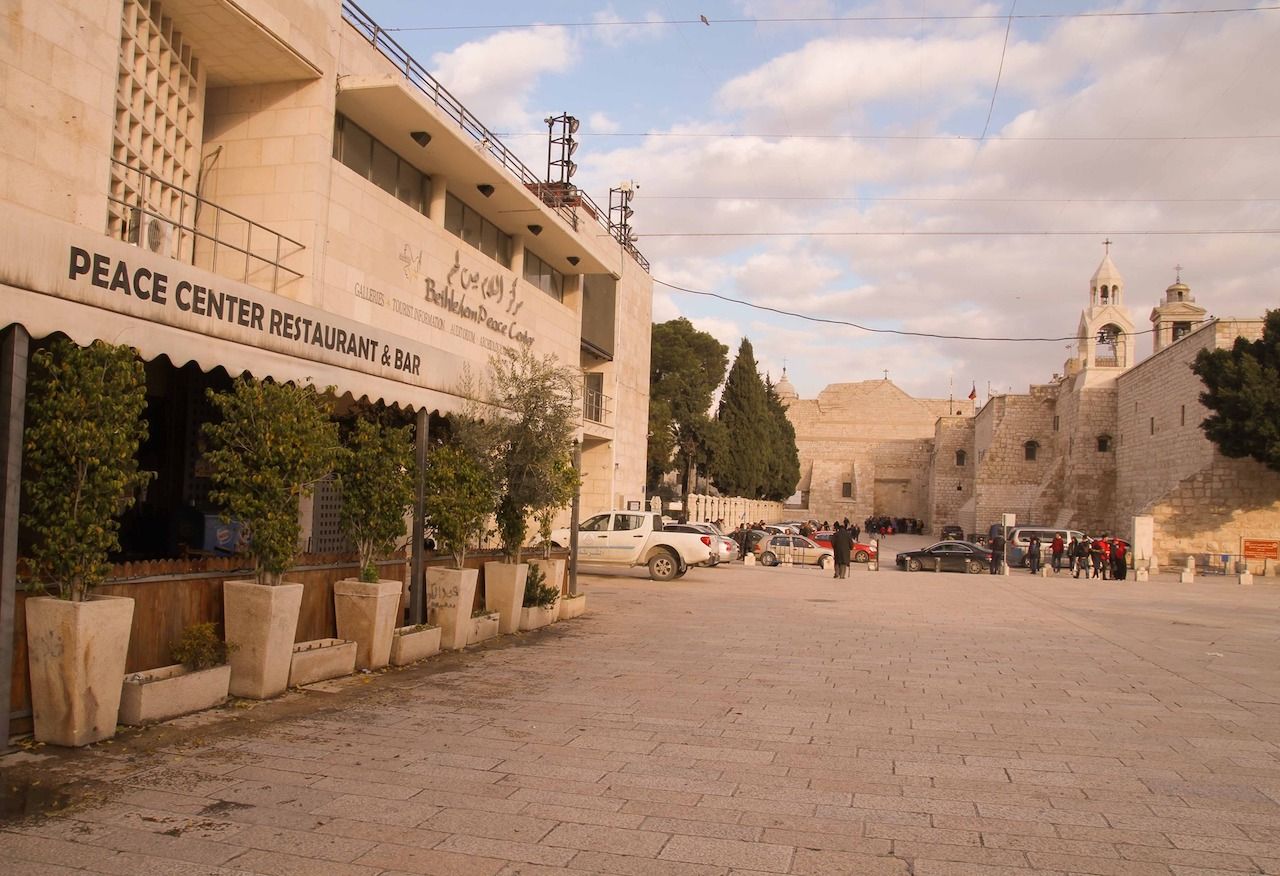
Photo: Peace center restaurant/Facebook
Food: Palestinian cuisine has many Mediterranean influences, so you can expect plenty of fresh vegetables and olive oil. There are many Arabic fast-food places that serve falafels and shawarma, but you can also find other types of restaurants. Besides the ubiquitous hummus, try the musakhan (roasted chicken placed on a slice of bread and topped with chestnuts and tons of caramelized onions) at the Peace Center Restaurant in Bethlehem. For a treat, have a kanafeh, a delicious pastry made out of semolina dough, soaked in syrup, and layered with cheese — it can be purchased at most markets, cafes, street stands, and restaurants, and it pairs amazingly well with Arabic coffee. The West Bank also has some microbreweries worth trying; Taybeh Brewing Company is the oldest and is located in the Ramallah District.
How to get to the West Bank from Israel
You can get to the West Bank from Israel (through different checkpoints) and from Jordan (via Allenby Bridge about an hour from Amman). In both cases you’ll have to go through Israeli checkpoints. I’ve gone to the West Bank from Israel, and I was stopped and had my passport checked only on my way back to Israel. The process took less than 10 minutes, but the time can vary depending on the checkpoint. You’ll need to have your passport and your visa (the slip that was given to you when you entered the country since Israel doesn’t stamp passports) at all times.
What to do in the West Bank and where to start your visit
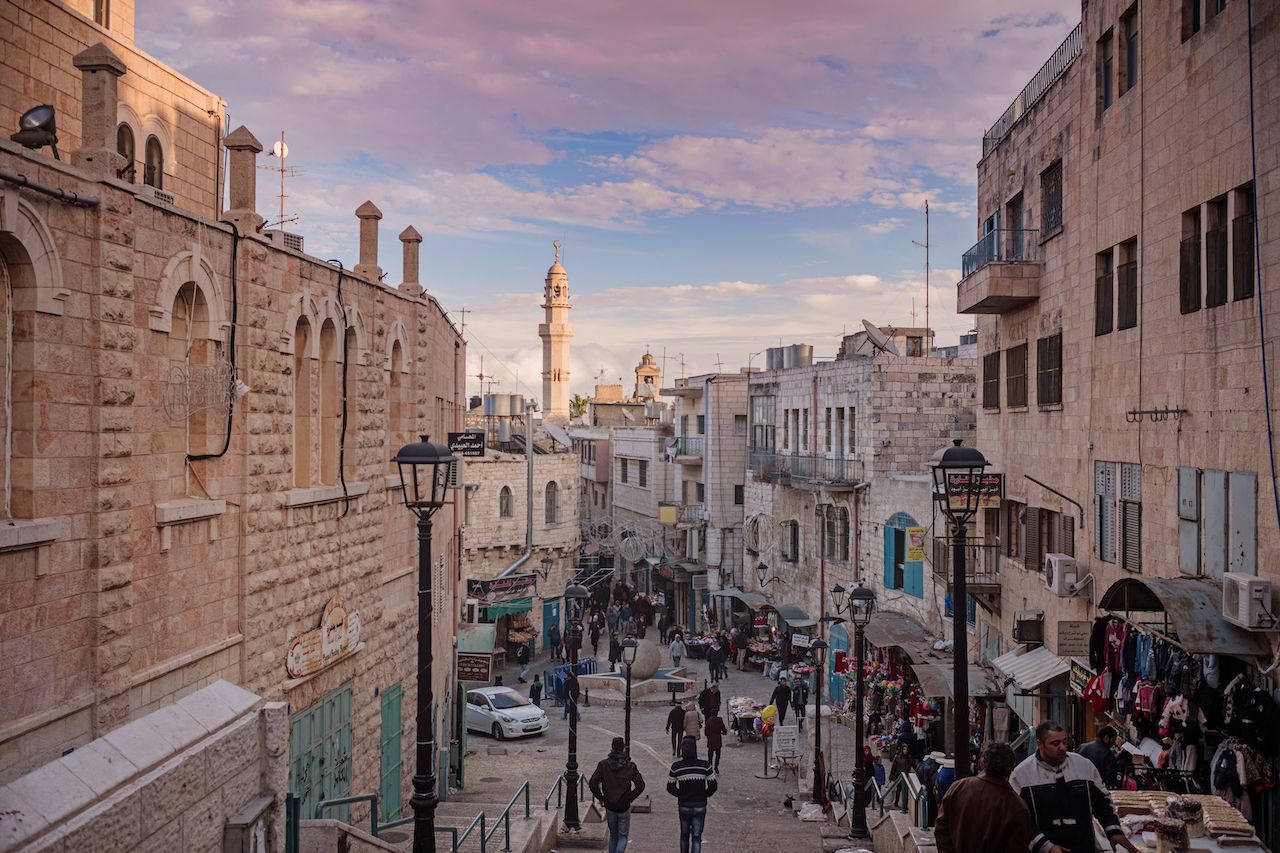
Photo: gary yim/Shutterstock
Start in Bethlehem. Take a taxi (15 minutes) or the Bus 21 from Jerusalem (near Damascus Gate in the Old City, it takes 30 minutes). Once in Bethlehem, hire a taxi driver (negotiate the fixed price first) to take you around.
The best things to see and do in the West Bank depend on your interest, but here are some great spots to check out for those with a spiritual, cultural, or political pursuit.
Bethlehem
According to the Bible, Bethlehem is the place where Jesus was born. Today, it has the biggest population of Arab Christians in the West Bank. The Old City, with its white houses and its narrow limestone streets, is a beautiful sight.
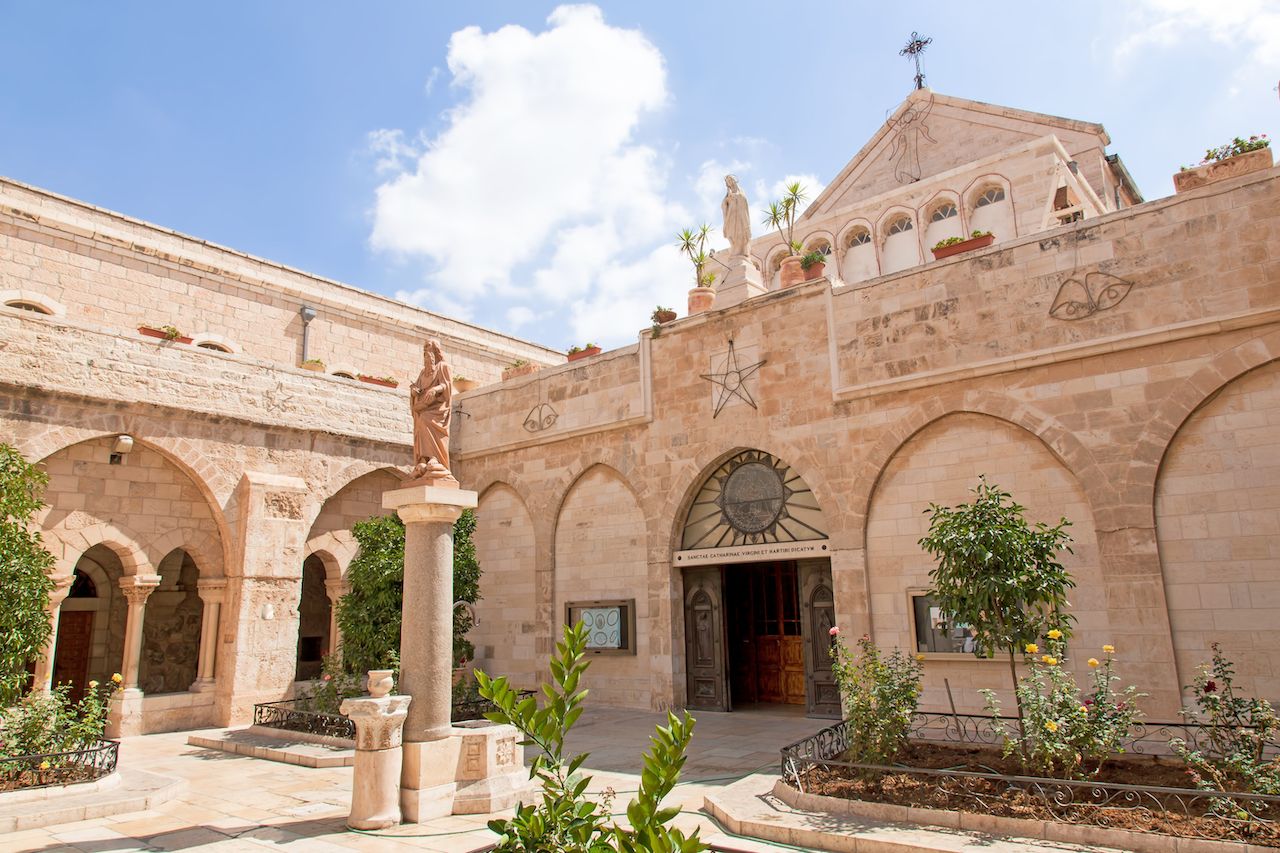
Photo: Victor Lauer/Shutterstock
The UNESCO’s World Heritage Church of the Nativity, right in the center of the Old City, is the oldest continuously operating church in the world (326 AD). The temple is administered by three different Christian denominations (Greek Orthodox, Armenian Apostolic, and Roman Catholic). Inside the Church, in the Grotto of the Nativity, is a 14-point silver star that marks the spot of Jesus’s birth. There are usually big lines of tourists waiting to enter, but if you go during lunch, you’ll have the place to yourself. You are allowed to bend over and touch the ground underneath the star, an exciting moment for Christian visitors from all over the world.
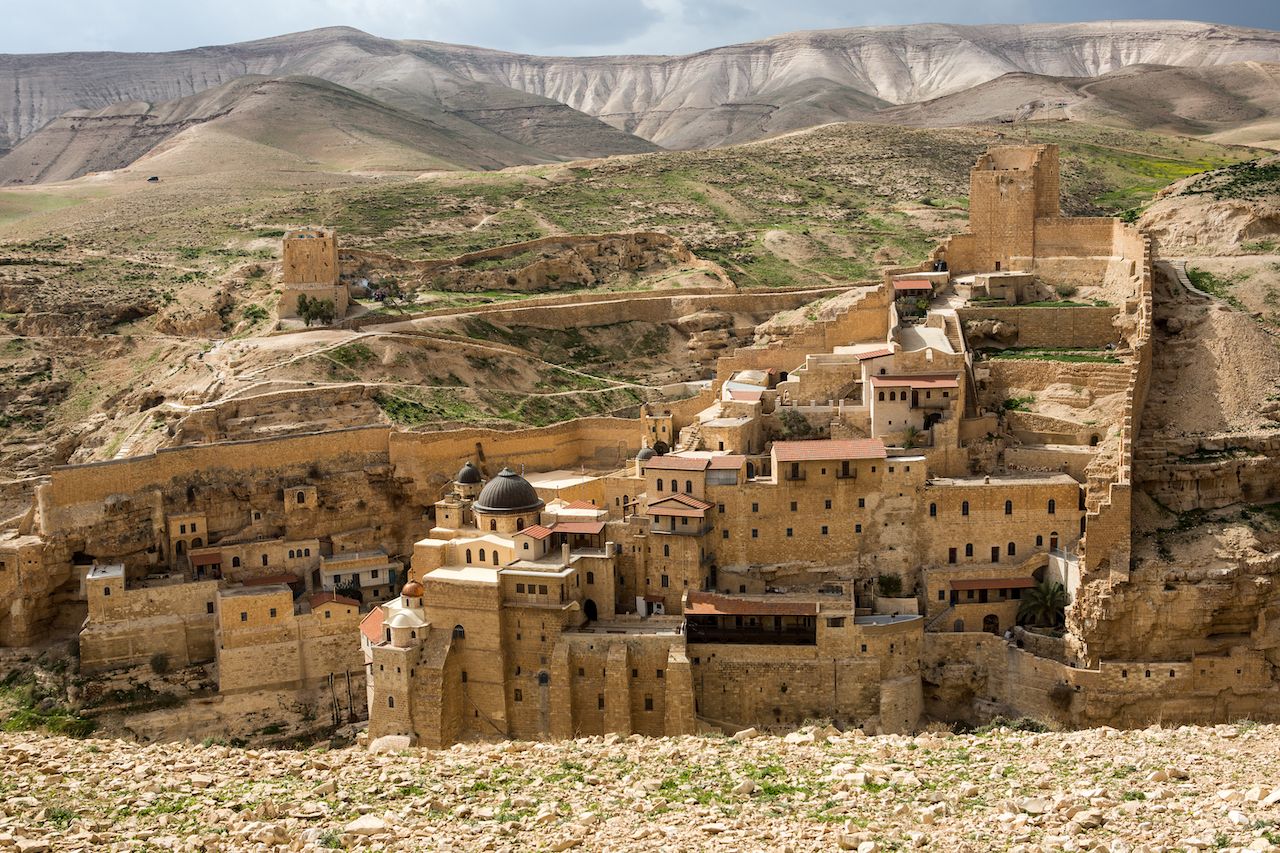
Photo: Yevgenia Gorbulsky/Shutterstock
Located 7.5 miles from Bethlehem, the Greek-Orthodox monastery of Mar Saba is one of the oldest inhabited monasteries in the world (483 AD), and it’s still functioning. Its founder, Saint Sabas, was one of the first hermit monks in the Negev desert where he worked to establish many other monasteries. The interior of the building is stunning, and one can see the remains of the saint. The setting of the monastery gives one of the most spectacular views of both Israel and Palestine. Women are not allowed to enter, but the drive through the desert to get there and the views are worth the little road trip (especially in the spring when the flowers are in bloom.)
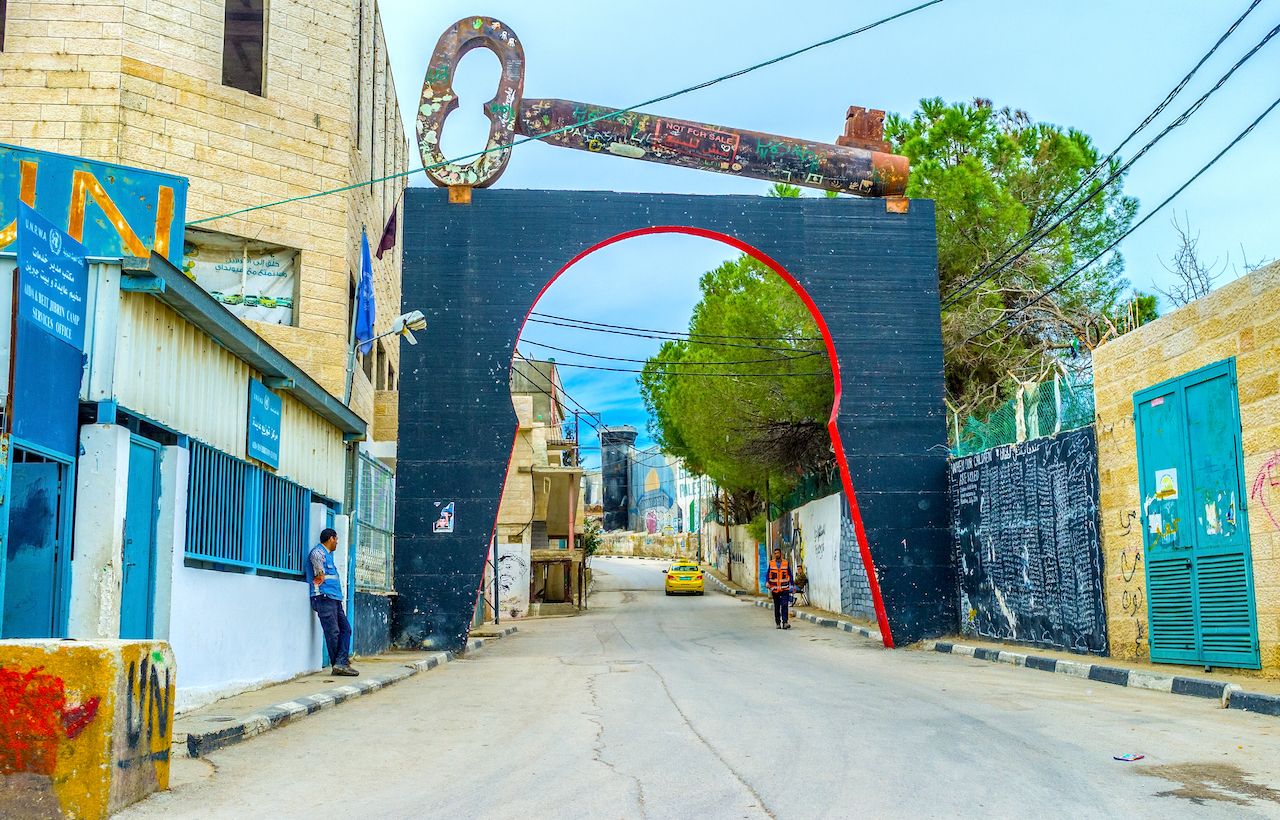
Photo: eFesenko/Shutterstock
Many independent travelers want to visit the refugee camps in Palestine, built and still run by the United Nations and now transformed into established neighborhoods. Both Aida and Dheisheh are located near Bethlehem and are easy to visit. There, you can see the politically charged street art and talk to people, including activists about the current political situation. If you go to any refugee camp, go or stay with someone who is familiar with the security situation. Conflicts can arise quickly. Note that there are Airbnbs inside the camps.
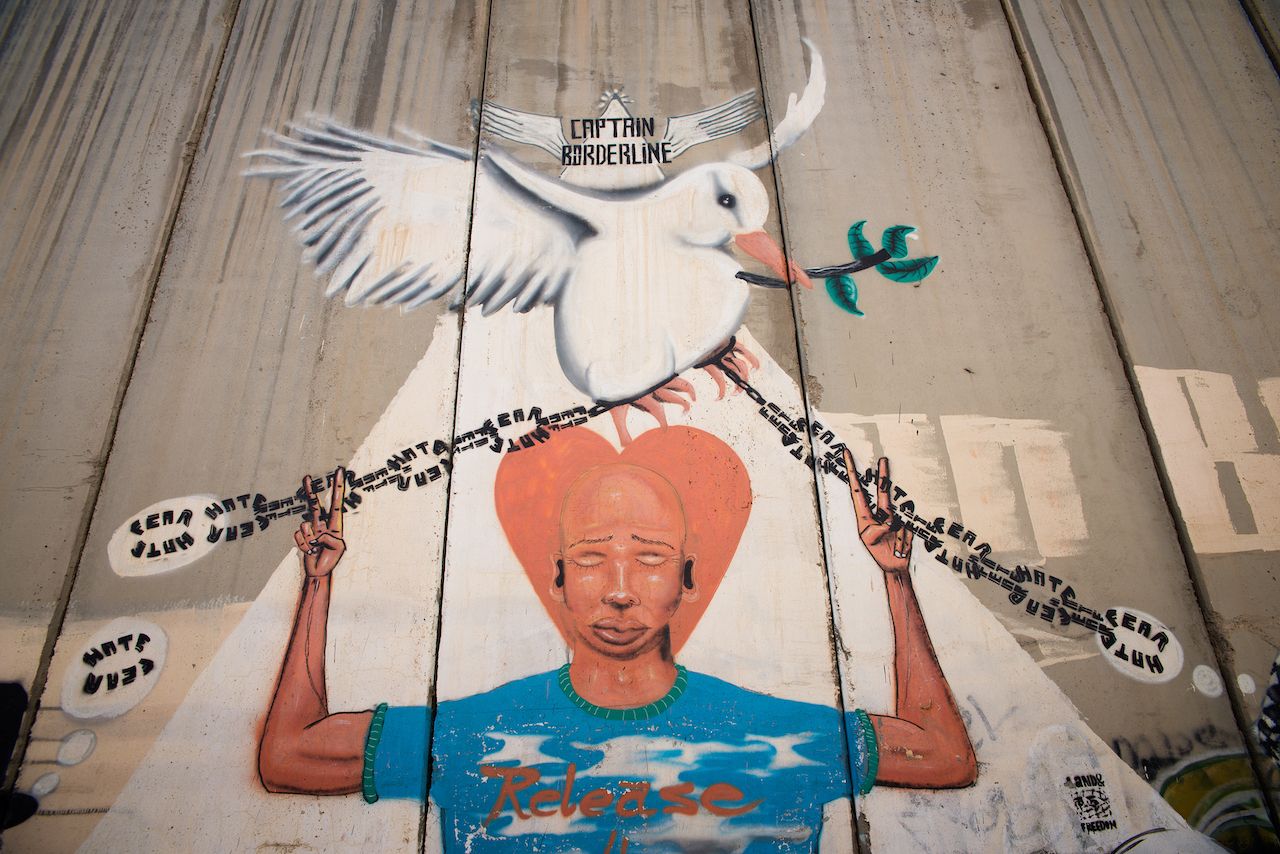
Photo: badahos/Shutterstock
Bethlehem is also known for its street art. There are three pieces adjudicated to Banksy (who also owns a hotel there) although it is believed that only one is authentic. There are hundreds of street art pieces on the security barrier (wall) that Israel built in 2002 to stop the suicide bombers attacks that killed hundreds of civilians in the ‘90s. Although the attacks have stopped, the wall is extremely controversial and is dubbed the “Separation Wall” by Palestinians. You can go to “The Banksy Shop” and get some souvenirs (t-shirts, postcards, etc.) or buy spray paint and leave your personal message on the wall.
When hunger strikes, head to the little souq and buy some delicious snacks like fresh fruits, pastries, nuts and caramelized fruit, dates, etc. Hit one the street stands to enjoy a traditional pomegranate juice.
Other places of interest to visit in or near the Old City include the Chapel of the Milk Grotto, a sanctuary for women who want to increase their fertility and have a healthy breastmilk supply; Rachel’s Tomb where it’s said the biblical matriarch died in childbirth on her way to Hebron; The Mosque of Omar, the only mosque in the city; and the Old Bethlehem Museum for traditional and beautiful Palestinian embroidered clothing.
Hebron
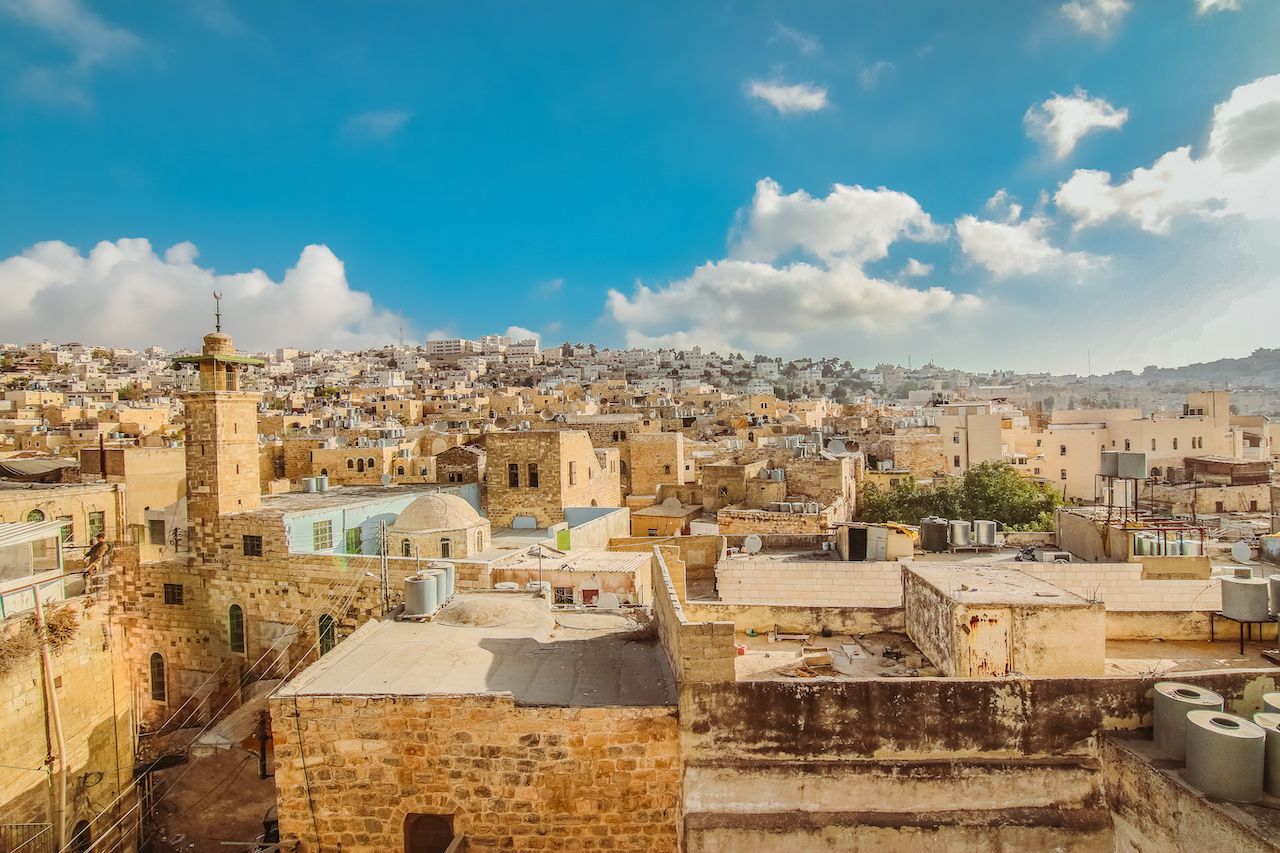
Photo: nayef hammouri/Shutterstock
Hebron is the city of Abraham (Ibrahim in Arabic) and the burial place of the biblical patriarchs and matriarchs (excerpt for Rachel), sacred to both Judaism and Islam. It’s not an easy city to visit because the Jewish settlements are within the city center and in the outskirts, so Hebron is geographically divided; you need to go through checkpoints to go from one side of the city to the other. Unlike the other places in the West Bank, the tension here is palpable, especially since 2014 when three Israelis teenagers were kidnapped and killed. Tension can escalate quickly, especially on Fridays.
On the other hand, if one wishes to learn more about the Israeli-Palestinian conflict, the visit to Hebron is essential. Take the Dual Narrative Hebron Tour led by two guides, one from Palestine and the other one from Israel, to get a very well balanced and broad perspective of this complex city.
Ramallah
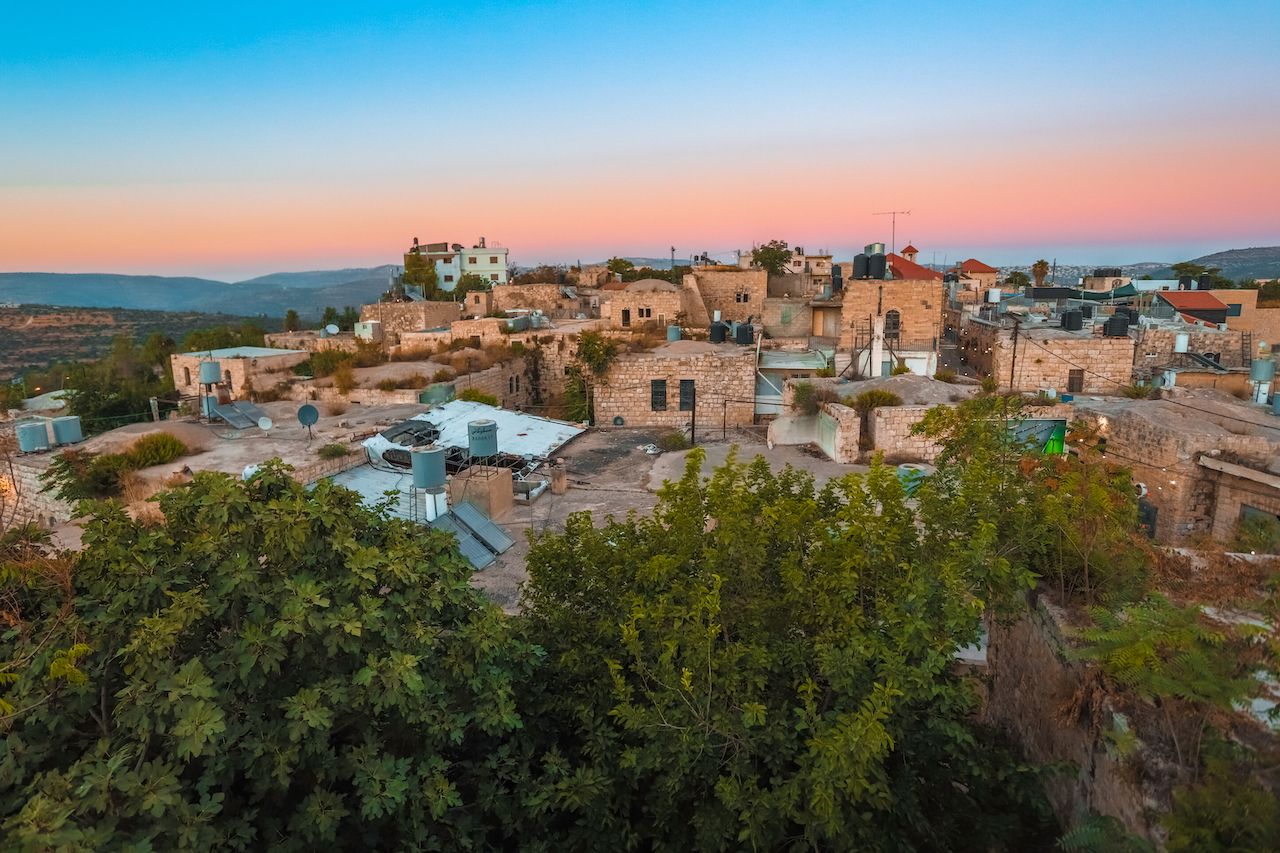
Photo: nayef hammouri/Shutterstock
Located only 6.2 miles north of Jerusalem, Ramallah is the administrative center of the West Bank (both Palestinians and Israelis consider Jerusalem to be their capital). The city is very cosmopolitan, full of shops, cafes and restaurants, people walking around and talking loudly. The center of Ramallah is Al-Manara Square, with its iconic four sculpted lions. Explore the Al-Muntazah neighborhood and visit the many places related to modern Palestine’s history, like Yasser Arafat’s presidential campground, and his gigantic and solemn tomb, guarded by soldiers and perpetually adorned with wreaths.
Jericho
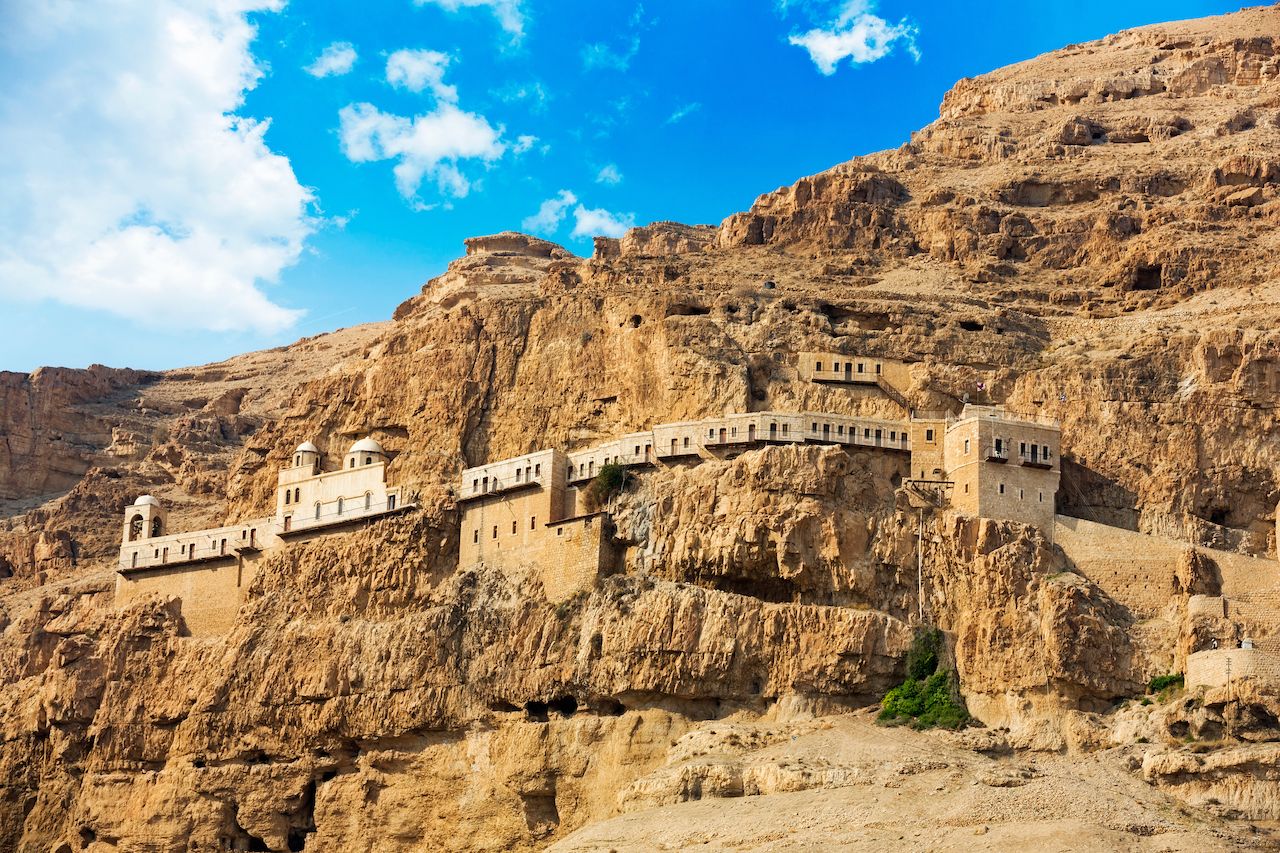
Photo: posztos/Shutterstock
The archaeological finds suggest that Jericho was built more than 10,000 years ago, which makes it one of the oldest cities in the world. You can visit the archeological site and then take a cable car to the Monastery of the Qurantul, built on the Mount of Temptation, where Christians believe Jesus was tempted by the Devil.
Other places to visit in the West Bank
- Qasr al-Yahud, on the Jordan River, is the place where some Christians believe Jesus was baptized by John the Baptist (you can see Jordan on the other side of this very narrow river). There is another bapstimal place in the North of Israel, near Tiberias.
- Nablus is located in a beautiful valley and known for its olive oil soap factories, olive-wood carvings, and its kanafeh. The old city is beautiful. Check out Mount Gerizim and spend some time learning about one of the world’s last communities of Samaritans. Nablus is also home to many hammams, so pick one to relax at the end of a long day of exploration. Hammam Ash-Shifa is a tried and tested bathhouse that we recommend.
Visiting the Gaza Strip border
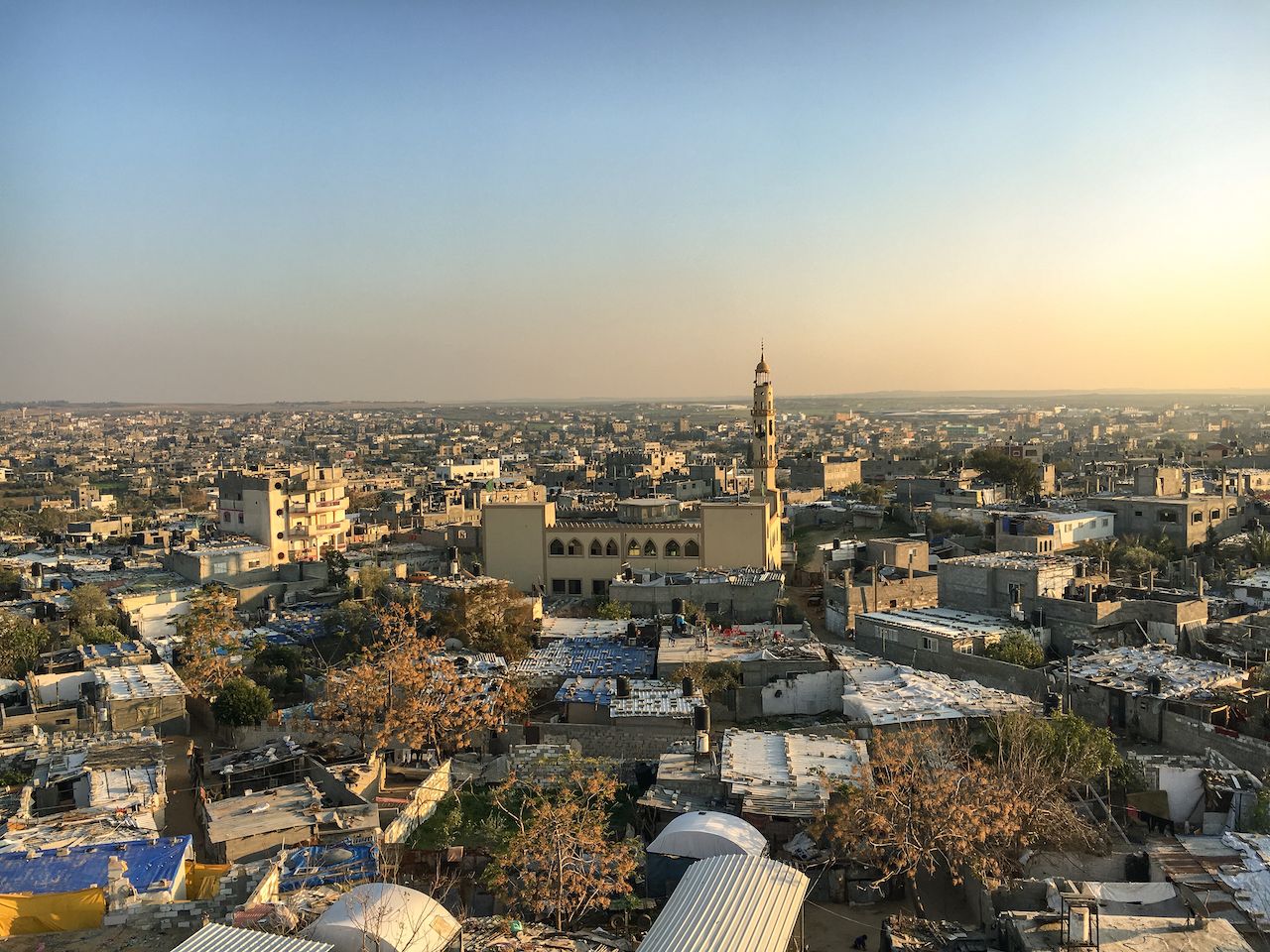
Photo: Val_Yankin/Shutterstock
The Gaza Strip has been closed to tourism since Israel’s blockade (2006) when Islamist party Hamas took control. But, if you really want to learn about the conflict while you are here, you can get closer to the border to visit some of the neighboring villages and kibbutzim and to see the Strip from a distance.
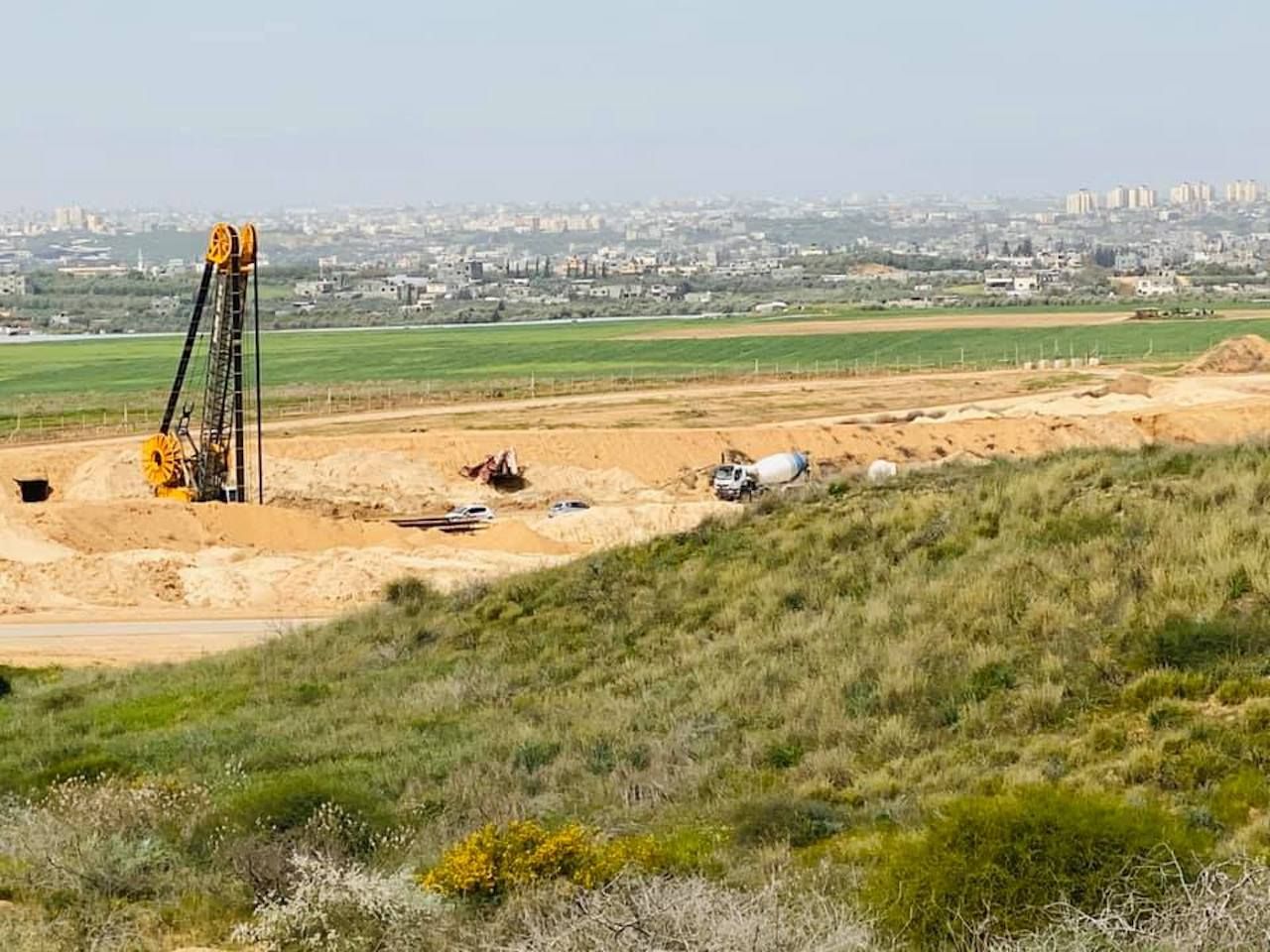
Photo: Laura Bernhein/Facebook
We do not advise to go to the border by yourself, without anyone who is familiar with the security situation. Hamas attacks with rockets (and even with helium balloons full of explosives) are constant in this area and, once the alarms sound, you have only 10 seconds to get to a shelter. So please take it seriously, go with a local, and stay very alert.
Gaza’s population is almost two million people (one of the most densely populated places in the world). The unemployment rate is above 50 percent (some say it’s 70 percent for younger people), and its inhabitants have electricity only four to six hours a day. How things have got so bad in this part of the world is a long, complicated story that differs depending on who you talk to. Take this dual narrative North of Gaza Border Reality Tour for a comprehensive summary on the ancient and current history of the region. For me and my children, the three highlights of the tours were:
- The Ezer Crossing (the only crossing for people between Israel and Gaza open today) where we had the chance to talk to some Gazans who were waiting for the transportation to go to both Israel and the West Bank to receive medical treatment at the local hospitals. An old man told us with a smile, “We are neighbors, all sons and daughters of Ibrahim.”
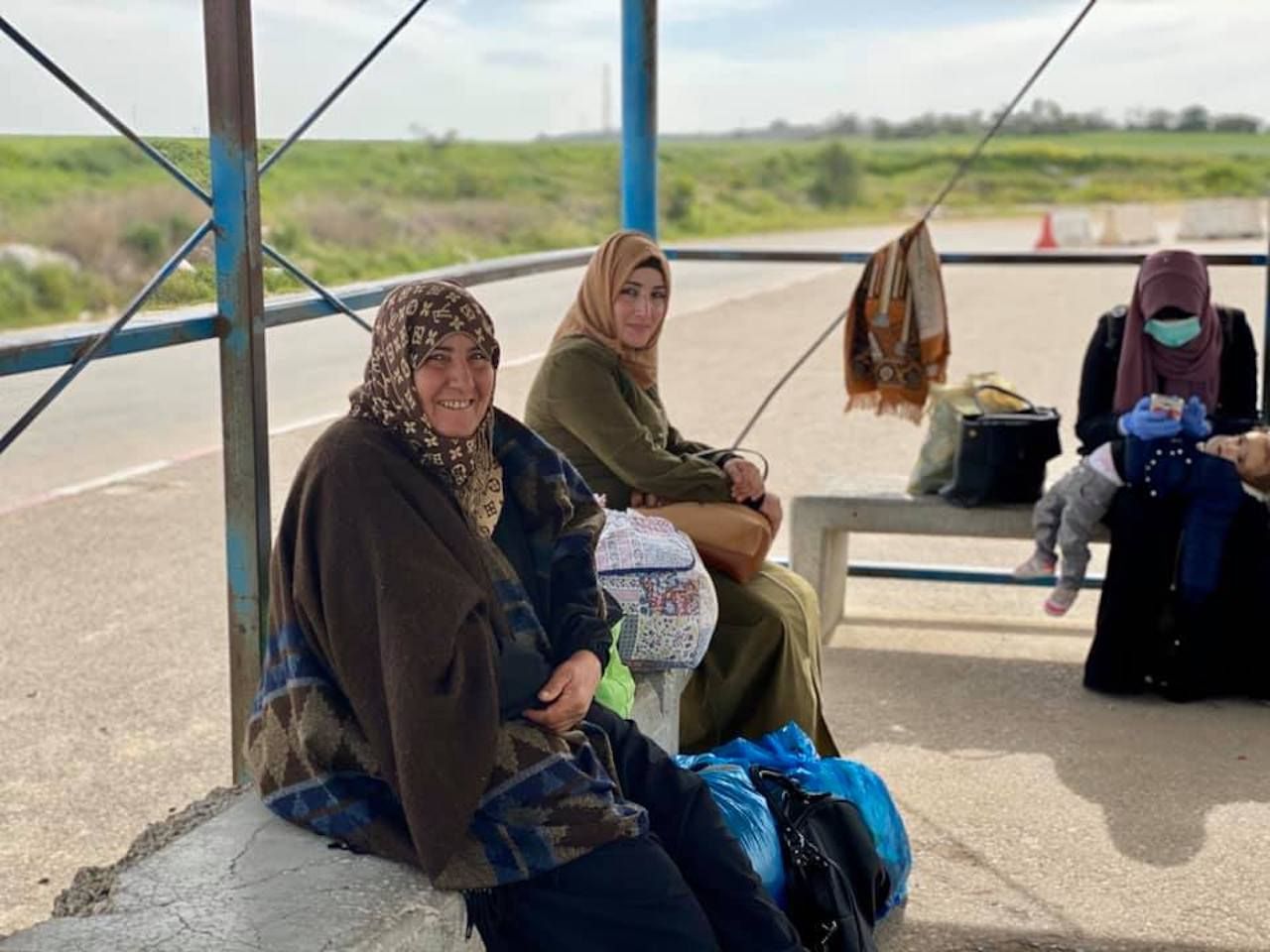
Photo: Laura Bernhein/Facebook
- This menorah was made with rockets in the town of Sderot. Sderot is located less than one mile from the Gaza Strip and has been the target of attacks from Hamas. For that reason, the town is full of bomb shelters, as well as artworks made with the rockets destined to damage it.
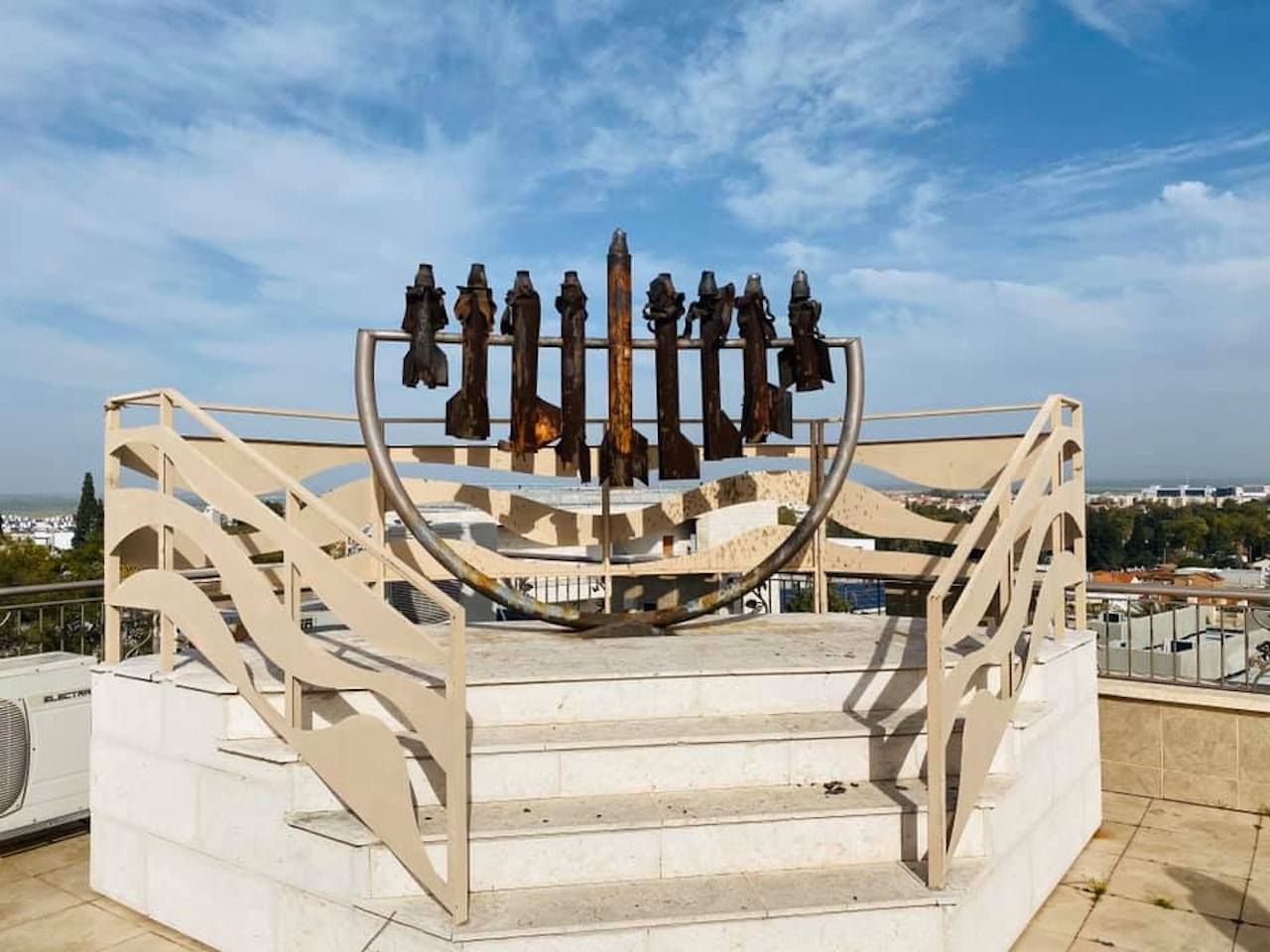
Photo: Laura Bernhein/Facebook
- The visit to the Moshav Netiv HaAsara (a moshav is an agricultural village), where we participated in the Path to Peace Project by leaving a ceramic piece on the first wall (there are more) that signals the border between Israel and the Gaza Strip.
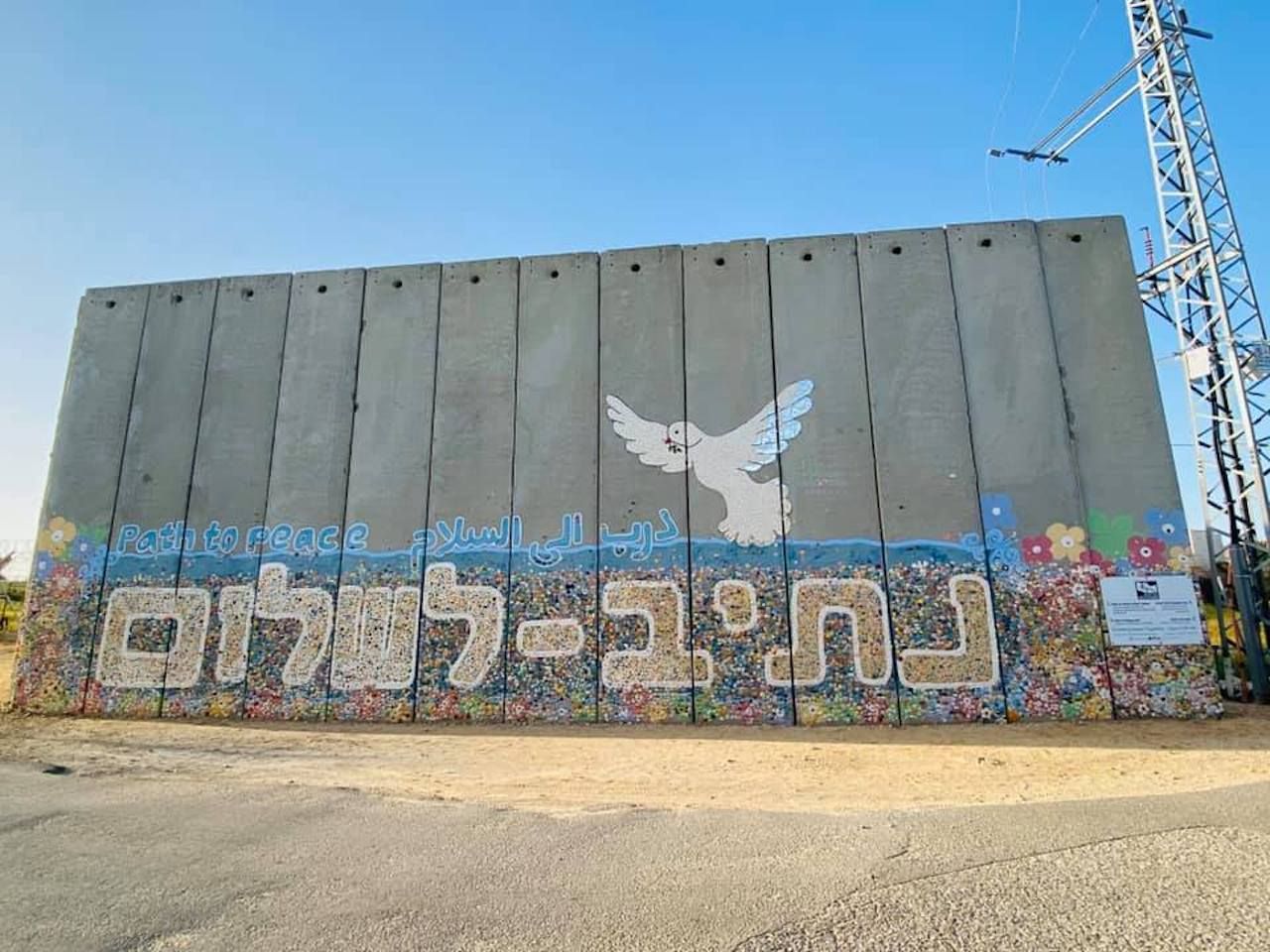
Photo: Laura Bernhein/Facebook
The only way to get to know a place is to spend quality time there. It is one thing to read about the complexities of the situation between Israel and Palestine in the newspaper and a very different one to breathe in its reality in the West Bank or in the fields of the Negev. You might not become an expert with one or two trips to the area, but being there and talking to people will open your mind so you don’t automatically think of the current situation as either black or white.